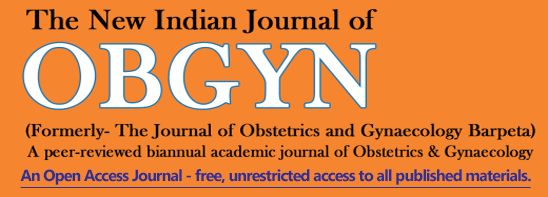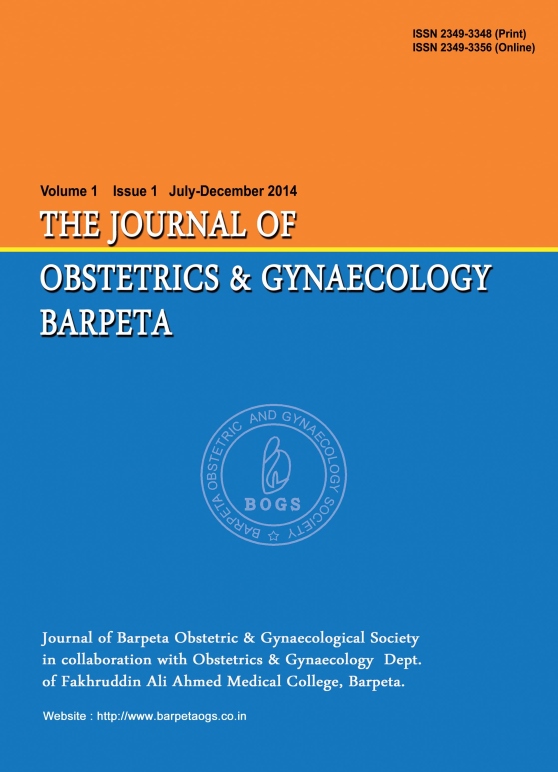
The New Indian Journal of OBGYN. 9(2):328-333
Antepartum haemorrhage: incidence, risk factors and pregnancy outcomes in tertiary health centre of Uttarakhand, India
Sheenu Maheshwari, Purnima Upreti, Manika Sachdeva
ABSTRACT
Background: Antepartum haemorrhage (APH) is an obstetric emergency contributing to significant amount of maternal and perinatal morbidity and mortality. It is mainly caused by placenta previa, abruptio placenta, local causes and indeterminate causes. Objective: The objective of this study is to identify the risk factors associated with APH and to study the maternal and perinatal outcomes in patients with APH at tertiary health care hospital. Methodology: This was a retrospective observational study conducted at Himalayan Institute of Medical Sciences, Dehradun from October 2018 to June 2020. A total of 57 cases of APH were studied. Diagnosis was made on the basis of history taking, clinical examination and findings of ultrasonography and was categorized as placenta previa, abruptio placenta, indeterminate and local causes. Results: Out of 3252 deliveries, 57 had APH, incidence being 1.75%. Maximum number of cases about 32 (56.1 %) were of placenta previa followed by abruptio placenta in 24 cases (42.1%) and least was indeterminate cause (1.75%). Incidence of APH was highest (56.1%) in the age group of 26-30 years. Anemia was the most common (35.1%) antenatal complication seen. Previous caesarean section (43.86%) and preeclamsia (33.3%) was the most common risk factor found to be associated with placenta previa and abruption respectively. Malpresentation were most commonly seen in placenta previa (31.25%). In most cases of APH (75.4%), mode of delivery was caesarean section. 12.5% of placenta previa cases had peripartum hysterectomy and there was one maternal death in placenta previa group. Perinatal outcome was poor in cases of abruption with 13.33% of stillbirths as compared to 3.3% stillbirths in women with placenta previa. Prevalence of low birth weight (71.7%) and preterm babies (73.3%) was high. Conclusion: Higher incidence of APH was associated with poor nutritional status, anemia and lack of awareness in India. Maternal and perinatal morbidity and mortality can be prevented by early antenatal registration, regular antenatal check-up, improved nutritional status, increased awareness and timely caesarean section.
Volume 1 Issue 2
Volume 2 Issue 1
Volume 2 Issue 2
Volume 3 Issue 1
Volume 3 Issue 2
Volume 4 Issue 1
Volume 4 Issue 2
Volume 5 Issue 1
Volume 5 Issue 2
Volume 6 Issue 1
Volume 6 Issue 2
Volume 7 Issue 1
Volume 7 Issue 2
Volume 8 Issue 1
Volume 8 Issue 2
Volume 9 Issue 1
Volume 9 Issue 2
Volume 10 Issue 1
Volume 10 Issue 2

